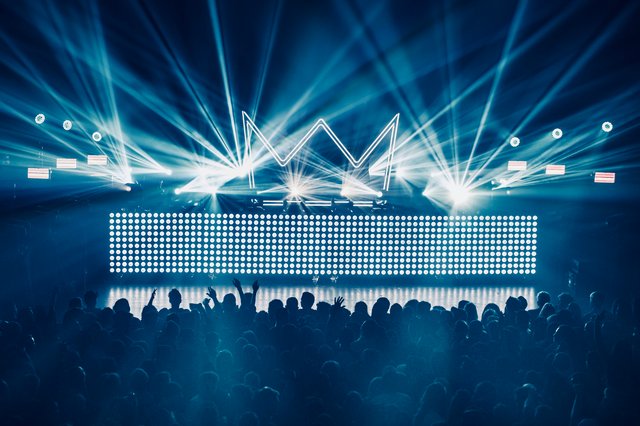The Art of Stage Construction for Live Events.

From the iconic pyramid at Glastonbury every live event tries to make its mark with something unique and recognisable. The stage design and construction is an art form in itself and can help define an event and its brand identity, particularly on the music festival scene where stage designs have reached new levels of creativity in recent years.
The Glastonbury pyramid stage is almost a brand in itself and so recognisable its super simple design is unlikely to be changed in the near future. Going to the other extreme you only need to look at the stage set for Tomorrowland which personifies the height of creativity and extravagance. It takes a year to plan and 1,500 people four weeks to set up the whole scenography and cost estimates vary between $1.7m and $5m (unconfirmed). However, a festival like Tomorrowland does turn a gross profit in excess of $30m each year.
Back to reality most live music events and music festival organisers can only dream of the scale and budgets that Tomorrowland have. With tight budgets it pays to be well organised and plan well in advance. Stage design should probably start a year in advance of the event dates and there are plenty of professional stage designers who know how to create something memorable within a given budget. This is a complex task as the designers must take into account construction materials and footprint size. Most stage designs will be a unique one off so the planning and estimates need to be as accurate as possible.
Whoever is commissioned to design the stage there are key considerations to take in account including the placement of stage risers, rigging for light and sound and cabling. Ease of construction and breakdown also needs to be factored in to create estimates for construction crew size and time to build and breakdown. Materials used and the overall structure must comply to local Health and Safety requirements too. In most cases the designers will create a 3D animation or even a scale model as part of the approval process to bring the design to life.
Building in contingencies for timing and costs is crucial when designing and constructing what is often a bespoke build so there will always be unforeseen problems. If you are not going down the creative custom-built stage design there are many modular stage construction kits that can be rented to fit a specific space with plenty of live event equipment suppliers carrying stage build kits. If costs and space are limited it is still possible to get creative with stage backdrops/digital screens and on-stage effects with light shows to make the event a visual treat for event goers.
If you use an events management software solution like FestivalPro it already has built in functionality for all your stage design and construction planning and scheduling needs. The guys who are responsible for this software have been in the front line of event management for many years and the features are built from that experience and are performance artists themselves. The FestivalPro platform is easy to use and has all the features you need to plan and calendarise tasks for stage construction with collaboration possible between all parties involved.
Photo by Wendy Wei from Pexels
<< Back to articles
Contact us
Get in touch to discuss your requirements.
US: +1 424 485 0220 (USA)
UK: +44 207 060 2666 (United Kingdom)
AU: +61 (2) 8357 0793 (Australia)
NZ: +64 (0)9887 8005 (New Zealand)